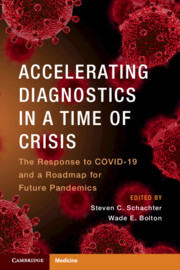1297 results
Clogauite, PbBi4Te4S3, a new member of the aleksite series
-
- Journal:
- Mineralogical Magazine / Accepted manuscript
- Published online by Cambridge University Press:
- 03 June 2024, pp. 1-26
-
- Article
-
- You have access
- Export citation
Trade-offs in fishing strategy decisions and conservation implications for small-scale fisheries
-
- Journal:
- Environmental Conservation , First View
- Published online by Cambridge University Press:
- 28 May 2024, pp. 1-9
-
- Article
-
- You have access
- Open access
- HTML
- Export citation
Kobellite homologues from the Boliden Au-Cu-(As) deposit, Sweden: jigsaw patterning via nanoscale intergrowths in chessboard structures
-
- Journal:
- Mineralogical Magazine / Accepted manuscript
- Published online by Cambridge University Press:
- 24 May 2024, pp. 1-44
-
- Article
-
- You have access
- Export citation
Jack Schneider and Ethan Hutt. Off the Mark: How Grades, Ratings, and Rankings Undermine Learning (but Don’t Have To) Cambridge, MA: Harvard University Press, 2023. 296 pp.
-
- Journal:
- History of Education Quarterly / Volume 64 / Issue 2 / May 2024
- Published online by Cambridge University Press:
- 16 May 2024, pp. 229-231
- Print publication:
- May 2024
-
- Article
- Export citation
Alan Meades. Arcade Britannia: A Social History of the British Amusement Arcade. Game Histories Cambridge: MIT Press, 2022. Pp. 336. $30.00 (paper).
-
- Journal:
- Journal of British Studies , First View
- Published online by Cambridge University Press:
- 24 April 2024, pp. 1-2
-
- Article
- Export citation
The effects of exposure and explicit stereotypes on veracity judgments of Polish-accented English speech: A preregistered close replication and extension of Boduch-Grabka & Lev-Ari (2021)
-
- Journal:
- Studies in Second Language Acquisition , First View
- Published online by Cambridge University Press:
- 22 March 2024, pp. 1-17
-
- Article
-
- You have access
- Open access
- HTML
- Export citation
Head and Neck Cancer: United Kingdom National Multidisciplinary Guidelines, Sixth Edition
-
- Journal:
- The Journal of Laryngology & Otology / Volume 138 / Issue S1 / April 2024
- Published online by Cambridge University Press:
- 14 March 2024, pp. S1-S224
- Print publication:
- April 2024
-
- Article
-
- You have access
- Open access
- HTML
- Export citation
Index
-
- Book:
- Accelerating Diagnostics in a Time of Crisis
- Published online:
- 06 January 2024
- Print publication:
- 07 March 2024, pp 274-280
-
- Chapter
- Export citation
Acknowledgments
-
- Book:
- Accelerating Diagnostics in a Time of Crisis
- Published online:
- 06 January 2024
- Print publication:
- 07 March 2024, pp xvii-xx
-
- Chapter
- Export citation
Contributors
-
- Book:
- Accelerating Diagnostics in a Time of Crisis
- Published online:
- 06 January 2024
- Print publication:
- 07 March 2024, pp ix-xii
-
- Chapter
- Export citation
Chapter 14 - Summary and Path Forward for Future Pandemics
-
-
- Book:
- Accelerating Diagnostics in a Time of Crisis
- Published online:
- 06 January 2024
- Print publication:
- 07 March 2024, pp 263-273
-
- Chapter
- Export citation
Dedication
-
- Book:
- Accelerating Diagnostics in a Time of Crisis
- Published online:
- 06 January 2024
- Print publication:
- 07 March 2024, pp v-vi
-
- Chapter
- Export citation
Copyright page
-
- Book:
- Accelerating Diagnostics in a Time of Crisis
- Published online:
- 06 January 2024
- Print publication:
- 07 March 2024, pp iv-iv
-
- Chapter
- Export citation
Contents
-
- Book:
- Accelerating Diagnostics in a Time of Crisis
- Published online:
- 06 January 2024
- Print publication:
- 07 March 2024, pp vii-viii
-
- Chapter
- Export citation
Preface
-
-
- Book:
- Accelerating Diagnostics in a Time of Crisis
- Published online:
- 06 January 2024
- Print publication:
- 07 March 2024, pp xv-xvi
-
- Chapter
- Export citation
Using Data from Uniform Rate Applications for Site-Specific Nitrogen Recommendations
-
- Journal:
- Journal of Agricultural and Applied Economics / Volume 56 / Issue 1 / February 2024
- Published online by Cambridge University Press:
- 08 February 2024, pp. 138-154
-
- Article
-
- You have access
- Open access
- HTML
- Export citation
Near-source passive sampling for monitoring viral outbreaks within a university residential setting
-
- Journal:
- Epidemiology & Infection / Volume 152 / 2024
- Published online by Cambridge University Press:
- 08 February 2024, e31
-
- Article
-
- You have access
- Open access
- HTML
- Export citation

Accelerating Diagnostics in a Time of Crisis
- The Response to COVID-19 and a Roadmap for Future Pandemics
-
- Published online:
- 06 January 2024
- Print publication:
- 07 March 2024
28 A Graph Theoretical Approach to Understanding Associations between Structural Connectivity and Improvements in Behavior of Children Born Very Preterm Following a Positive Parenting Intervention
-
- Journal:
- Journal of the International Neuropsychological Society / Volume 29 / Issue s1 / November 2023
- Published online by Cambridge University Press:
- 21 December 2023, pp. 903-904
-
- Article
-
- You have access
- Export citation
87 Suitability of the I-InTERACT-North Parenting Program for families with autistic children
-
- Journal:
- Journal of the International Neuropsychological Society / Volume 29 / Issue s1 / November 2023
- Published online by Cambridge University Press:
- 21 December 2023, p. 188
-
- Article
-
- You have access
- Export citation



